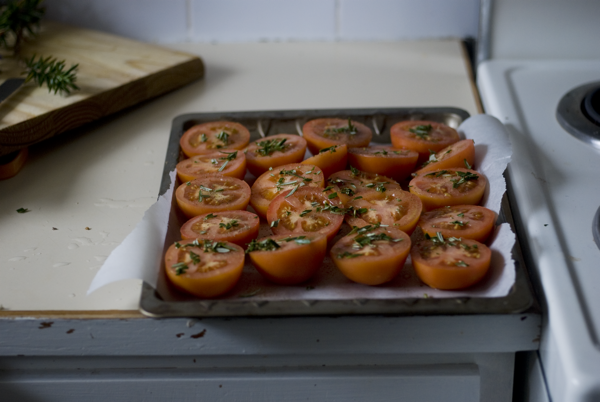In an ideal world, I would have been able to dedicate all my time towards converting my diet to a regional one. However, this week and the next I'm on a course where I get to spend eight hours of my day in a classroom, learning about system dynamics. I'm hoping that the course is going to improve my understanding of the food economy as a system, so that I can suggest more useful interventions and adjustments for making it more sustainable. I leave our little home at 7h30 in the morning and arrive home anywhere between 17h30 and 19h00. Welcome to the real world. And I guess this is the way it is for most people. This got me thinking that the challenges of sourcing food regionally are perhaps not limited to only identifying regional suppliers, there is also our daily must-do lists to deal with before we can focus on anything else.

Perhaps the best solution would then be to work with what we have and seeing that this week is dedicated to making regional food happen on the move, I will focus on the places were we have lunch during the week. The supply chains of "lunch providers" could be tweaked to source food regionally. Initiatives dedicated to this concept are often referred to as "farm-to-fork" programs. Institutions like schools and hospitals, office parks and restaurants commit to sourcing food regionally. Their menus are therefore adapted to the seasons and to whatever food is grown regionally.
I'm lucky enough to have such a program in place at the
Sustainability Institute. Our
farm-to-fork initiative, managed by Kate Shrire of Slow Food Cape Town and headed by cook Colleen Leith, aspires to source as many regional and agro-ecological produce as possible. It is based at the Guest House at the Sustainability Institute and serves daily lunches made from these ingredients. In doing so it supports the principles mentioned in our
FAQ. Kate promised to dedicate one of next week's lunches to The Regional Buffet's mission and to share the recipe and sources with us. Thanks Kate!
To encourage your daily lunch hang-out to source their ingredients regionally, whether it be your school's cafeteria or the take-out place on the corner, start asking them questions about where they source their ingredients from. We can do a lot for making our food systems more sustainable by asking the right questions.
And then for another on-the-move regional tactic, I leave you with the recipe of the soup that welcomes me home every night this week. I prepared a lot of it over the weekend. Team it up with Michelle's regional bread and any of the massive variety of local cheeses we have available to us (my cheese-loving roommates are going to help me out with this one; watch this space). Except for the paprika, garlic, black pepper and brown sugar, we've managed to source all of the other ingredients locally. Katrin knew of a regional salt supplier and Michelle found our much loved balsamic vinegar! Thanks ladies.
The welcome home soup
I'm usually not a fan of broth-type soups, but this is going to become one of my 2010 winter favourites! The preparation fits perfectly into a Sunday afternoon and the taste improves as the weekdays fly by.

10 tomatoes (from
Eric's farm)
1/2 tsp paprika
8 cups vegetable stock
6 large onions, thinly sliced (from Vredendal)
1 to 2 garlic bulbs, minced
2 tbsp rosemary (from our own pot of herbs)
1/2 tsp cracked pepper
1 tbsp brown sugar
You need to prepare the tomatoes at least 3 hours before you start the soup. Simply half them, drizzle them with a bit of balsamic vinegar, salt and paprika and then slow-roast them for about 3 hours on 140 degrees Celsius.
Heat up the stock while preparing the rest of the soup and keep it hot on one of the back stove plates.
To prepare the onions, cook them in half a cup of stock with the salt. Keep stirring the onions and adding stock as it reduces. Don't let the onions stick to the bottom of the pot. When the onions are soft and lightly golden, add the garlic, rosemary, chile flakes, pepper and sugar and continue to cook until the onions have broken down. Add the red wine and let it reduce to a syrup.
Chop up the tomatoes coarsely and add it to the onions together with the balsamic vinegar and stock. Bring the soup to a boil, reduce the heat and let it simmer, partially covered to allow all the flavours to get acuinted. Taste the soup and season it with more salt, pepper and/or balsamic vinegar.
Enjoy!








0 Comments:
Post a Comment